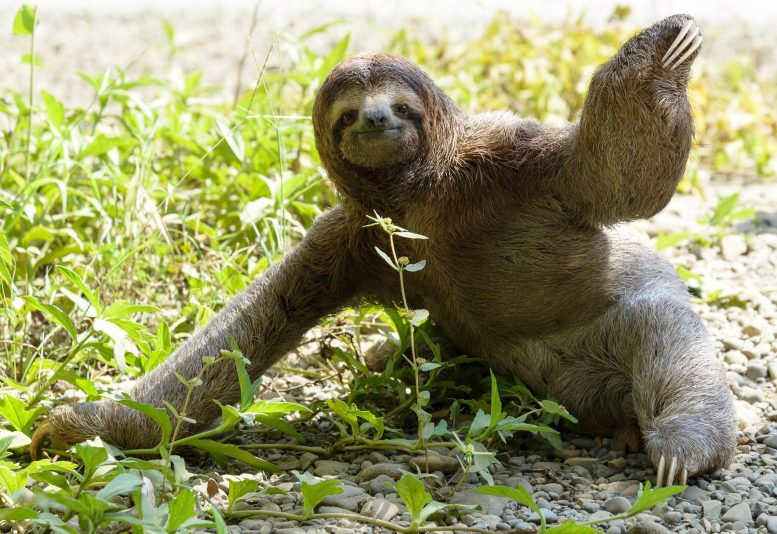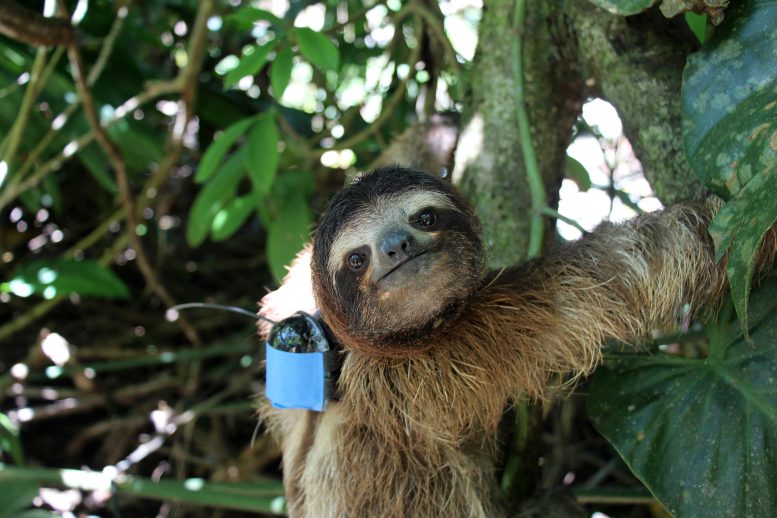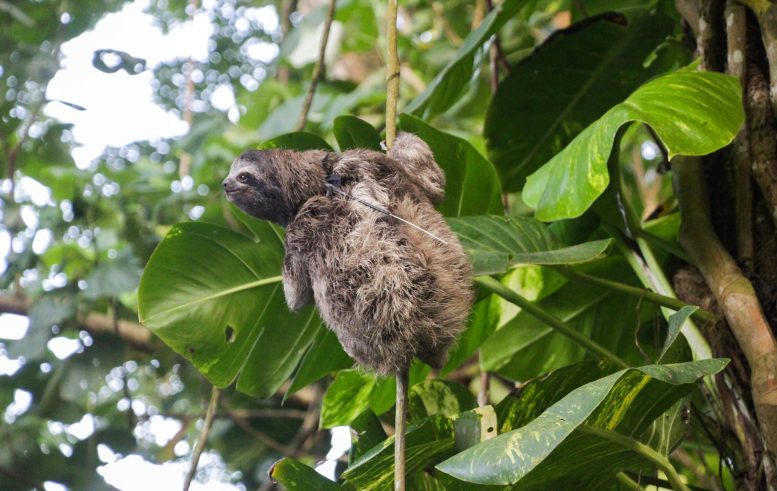
Researchers in Costa Rica used micro data loggers to observe the activity patterns of two sloth species, revealing their adaptive behavioral strategies and cathemeral activity patterns, unaffected by daily temperature changes. The study emphasizes the importance of understanding sloth ecology for effective conservation efforts in the face of climate change and human activities.
A pioneering study conducted in the lowland rainforests of Costa Rica has shed light on the activity patterns and behavioral adaptations of two sympatric sloth species, Bradypus variegatus and Choloepus hoffmanni.
Researchers have shed light on the activity patterns and behavioral adaptations of two sympatric sloth species, Bradypus variegatus and Choloepus hoffmanni. This groundbreaking study, conducted in the lowland rainforests of the Caribbean coast of Costa Rica, offers valuable insights into the ecological dynamics of sloths and their ability to thrive in diverse environmental conditions.
Faced with the challenge of studying the elusive nature of sloths, Dr. Rebecca Cliffe Founder and Executive Director of The Sloth Conservation Foundation and colleagues employed micro data loggers to continuously monitor the behavior of both three-toed sloths (Bradypus) and two-toed sloths (Choloepus) over extended periods, ranging from days to weeks. By doing so, they were able to explore the influence of fluctuating environmental conditions on sloth activity and its correlation with their unique low-energy lifestyle.

Using micro data loggers, scientists have studied the behavior of two sloth species in Costa Rica, revealing their adaptive strategies and irregular activity patterns throughout the day. The findings will aid in conservation efforts as climate change and human activities continue to impact these tropical ecosystems. Credit: The Sloth Conservation Foundation
The findings, published today (May 29) in PeerJ Life & Environment, indicate that both Bradypus and Choloepus sloths exhibit cathemeral activity patterns, characterized by irregular and variable periods of activity throughout the 24-hour cycle. This behavior allows sloths to take advantage of favorable environmental conditions while minimizing the risk of predation.
One of the key revelations of the study was the substantial variability observed in activity levels both between individuals and within individuals. This flexibility suggests that sloths have developed diverse strategies to adapt to their surroundings, enhancing their chances of survival in the face of environmental fluctuations.
Contrary to expectations, daily temperature did not significantly influence sloth activity. However, Bradypus sloths exhibited increased nocturnal activity on colder nights and the nights following colder days, indicating a potential correlation between temperature variations and their behavior.

Through the use of micro data loggers, researchers have successfully tracked and studied the behavior of two sloth species in Costa Rica, shedding light on their adaptive strategies and cathemeral activity patterns. The study is key to understanding how to protect these species amid increasing environmental threats. Credit: The Sloth Conservation Foundation
Dr. Cliffe, the lead scientist on the project, emphasized the importance of this research for conservation efforts and understanding the impact of anthropogenic activities and climate change on tropical ecosystems in South and Central America. With the vulnerability of these ecosystems on the rise, unraveling the behavioral ecology of wild sloths becomes crucial for developing effective conservation measures.
The cryptic nature of sloths has traditionally made long-term observational research challenging. However, the use of micro data loggers has provided unprecedented insights into their behavioral patterns and adaptations. This breakthrough paves the way for further studies and encourages the scientific community to explore the behavioral ecology of other elusive species with innovative approaches.
The results of this study not only contribute to our understanding of sloth ecology but also highlight the importance of preserving and protecting tropical rainforests and their unique inhabitants. As the global climate changes and human activities continue to impact these fragile ecosystems, the knowledge gained from this research will aid in the development of strategies to safeguard their biodiversity and promote sustainable practices.
Reference: “The behaviour and activity budgets of two sympatric sloths; Bradypus variegatus and Choloepus hoffmanni” by Rebecca N. Cliffe?, Ryan J. Haupt, Sarah Kennedy, Cerys Felton, Hannah J. Williams, Judy Avey-Arroyo and Rory Wilson, 29 May 2023, PeerJ Life & Environment.
DOI: 10.7717/peerj.15430









Be the first to comment on "Hang in There: How Sloths Master the Art of Survival in Changing Climate"